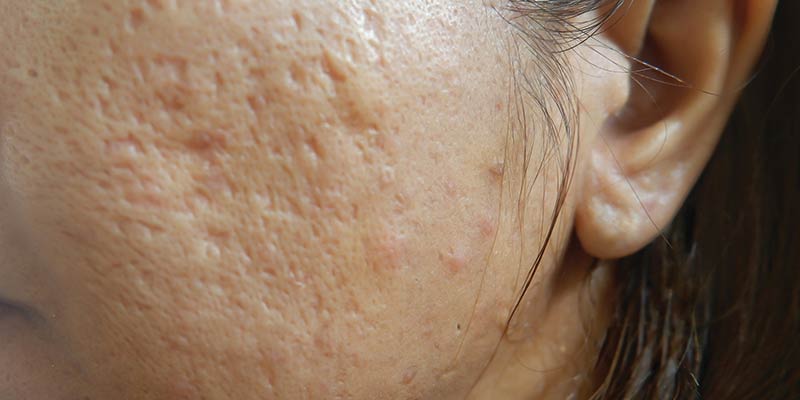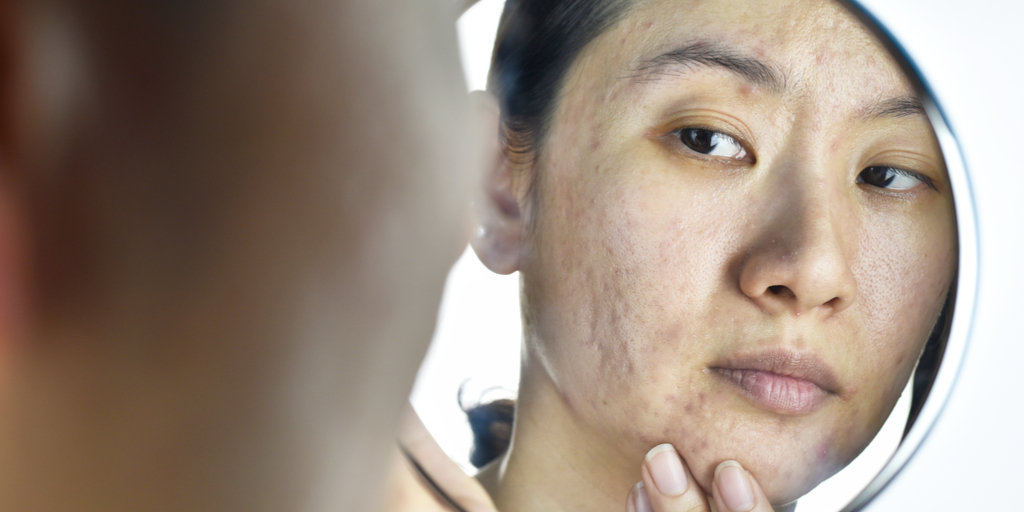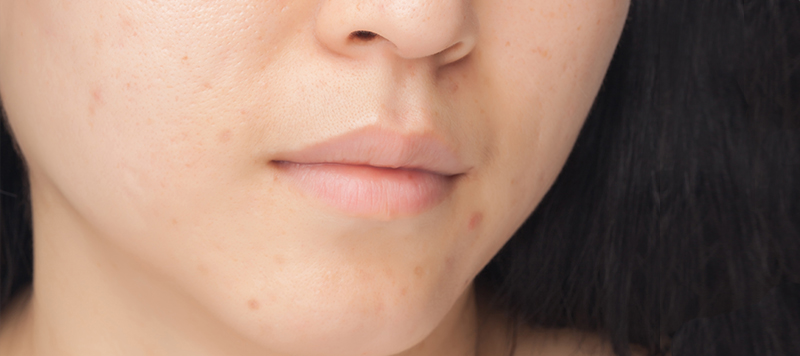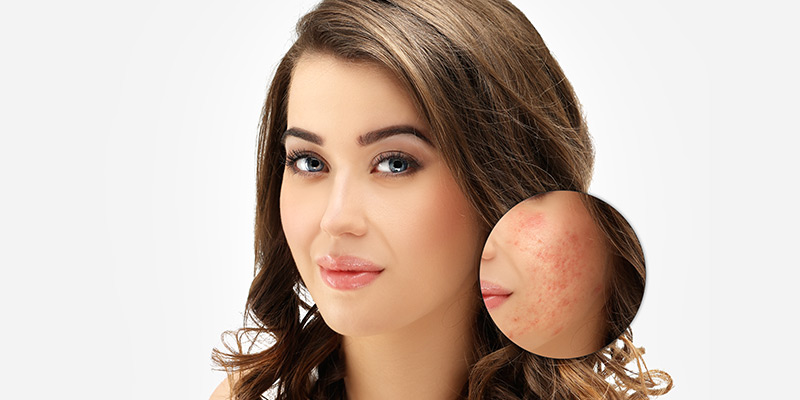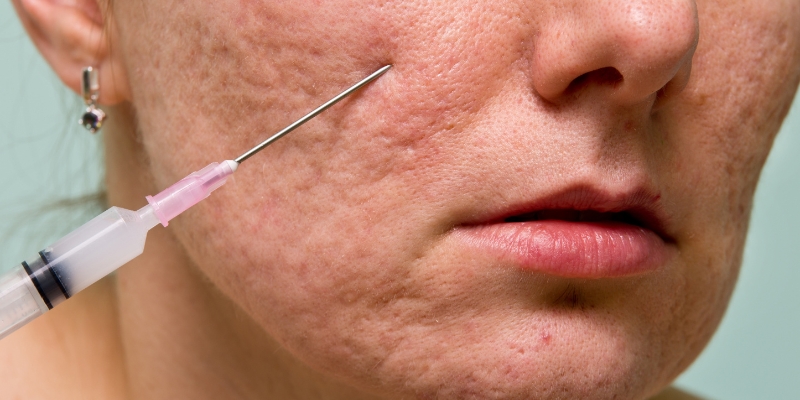How To Fade Deep-Pitted Acne Scars?
Are you having persistent breakouts? Do you notice that acne scars that are deep indent your skin and simply refuse to fade? Well, do not lose hope just yet. Fortunately, thanks to revolutionary innovations in dermatology, advanced treatment options are now available that can help to reduce severe scarring and restore smoother-looking skin. Read on to know the best treatment options to remove or minimise the appearance of deep scars visibly!
What Are Deep-Pitted Acne Scars?
Deep pitted acne scars, also known as atrophic scars, are usually the result of severe acne. They generally appear due to the loss of tissue during cell regeneration that eventually leaves behind a skin that has a pitted appearance. They look sunken and depressed with indentations or holes compared to the surrounding skin and are usually challenging to treat. Since they adversely affect the skin texture, they become a significant aesthetic concern for people who have acne-prone skin. If you have severe acne here are some signs and symptoms of deep-pitted scars you may observe.
Must Read: Advanced Acne Scar Treatment
How To Identify Deep Scars?
Here are the common characteristics of deep scars:
- Tissue Depth Or Depression: Flat, thin scars have an indentation that extends vertically to the deep dermis layer of skin or subcutaneous tissue.
- Loss Of Tissue/Skin Volume: These round to oval depressions have sharply demarcated edges and a width of 1.5 to 4 mm. Fibrotic indentations result in shadowing and a pitted appearance.
- Discolouration Of Skin: Acne may result in post-inflammatory hyperpigmentation. Some acne scars may vary in colour from pink, tan, skin-coloured to dark brown.
- Undulating Appearance: Often, these scars have a horizontal orientation with sharp margins or depressed tracks. Skin appears uneven due to the loss of critical rebuilding tissue without collagen.
Must Read: How To Get Rid Of Acne Scar On Your Face?
Do Pitted Scars Go Away?
No, most deep-pitted scars do not go away on their own or heal with time. However, many advanced procedures are now available to minimise them safely and effectively. Please read the next section to know more about them.
Professional Removal Treatments For Deep-Pitted Scars
Here are some popular professional solutions available at various skin clinics for treating deep-pitted scars.
- Laser Skin Resurfacing: Top dermatologists use fractionated erbium YAG laser, a USFDA-approved laser technology to create micro-injuries and treat deep-pitted scars by stimulating new collagen production. They target the scarred tissue by focusing a laser beam of precise wavelength with a handheld device. This non-invasive treatment is quick and painless with topical anaesthesia. It requires about six to eight sessions or as recommended by your dermatologist to rejuvenate the appearance and texture of your skin dramatically and make deep scars less noticeable.
- Chemical Peels: This advanced aesthetic procedure helps in the controlled exfoliation of the top layers to reduce scarring and reveal clear skin from underneath. Chemical peels use plant-based extracts along with AHAs and BHAs to effectively remove dead cells and encourage collagen production around deep scars, giving smoother skin and more even appearance. Dermatologists decide and administer the concentration of peels depending on the severity of scarring. Doctors generally recommend them only for treating superficial scars. However, nowadays, they may suggest them as a combination treatment for deep-pitted scars along with other modalities.
- MNRF: Micro-needling Radiofrequency or MNRF is a revolutionary dermatological procedure that uses radiofrequency energy to tighten the skin and make depressed scars less noticeable. The process stimulates both collagen and elastin production to remodel the skin. The heat energy generated during the treatment stimulates the cells in the connective tissues beneath the scarred surface and enables deep scar revision. The procedure gives impressive results with minimal or no side-effects. There is also almost nil downtime associated with this modality.
- Fillers: Your dermatologist may recommend fillers to treat deep-pitted scars. These fillers fill the scarred tissues and lift them to the level of the surrounding skin. They contain substances such as hyaluronic acid to add volume to the depressed scars with minimal discomfort. Hyaluronic acid fillers are USFDA-approved for safety but offer temporary results that last for nine months to two years. Subsequently, the body enzymes may gradually digest them. The filler treatment has no downtime and provides quick results.
- Surgical Removal: It is an invasive approach to remove severe scars. The surgical procedure helps in resurfacing scarred tissue and makes them less noticeable. After the scar excision, the doctors suture the skin, which may leave a smaller and less prominent scar than the original one. This is also called punch excision. The new scar is likely to fade over time, giving a smoother-looking appearance.
- Microdermabrasion: This treatment is a less intensive form of exfoliation which removes dead cells from the outermost skin layer and reduces small scars. Dermatologists spray ultra-fine crystals through a tube to scrub the skin and use vacuum suction to remove them instantly during the procedure. It requires multiple sessions to show visible improvement in skin texture.
- Dermaroller: Dermatologists recommend this treatment for minimising deep scars by encouraging your skin to produce more collagen. Your doctor may use a handheld, sterile needle-studded roller to puncture the scarred tissue gently. As the skin heals, it naturally produces more collagen and fills up the indentations. Most individuals notice results after nine months to a year though it may require repeated sessions as recommended by your skin specialist.
Must Read: What Is The Cost Of Laser Scar Removal?
Do Scar Removal Creams Help To Heal Deep-Pitted Scars?
Many OTC scar removal creams are available without a prescription, but they fail to reduce the appearance of deep pitted scars. Since scars are a result of tissue damage, topical ointments and gels cannot heal them or reduce any discomfort associated with them.
What Results Can You Expect?
The advanced treatments performed by dermatologists help in reducing the depth, size and visibility of scars. They help in improving the texture of the scarred tissue and giving you blemish-free skin.
However, the results may vary depending on the severity of the scars, skin type, the modality of treatment selected, the technology available and the expertise of the dermatologist performing the procedure.
Now you know all about treatments for deep-pitted scars. Go ahead and consult an experienced dermatologist at your nearest Oliva Skin & Hair Clinic to find out a suitable procedure for you and make an informed decision.
Our certified subject matter experts do extensive research and collate facts from reputed scientific journals and international studies to create informative and engaging articles related to all your dermatology concerns. They strive to help you decipher medical jargon, distinguish fact from fiction and overcome paranoia. Our qualified medical board or expert panel goes a step further to verify these facts based on their rich academic knowledge, vast clinical experience and critical industry insights to ensure you consume only medically accurate content that empowers you to make informed decisions about your hair and skin-care treatments and weight management. Check out our Editorial policy for further details
https://www.aad.org/public/diseases/acne/derm-treat/scars/treatmenthttps://www.everydayhealth.com/acne/remove-acne-scars.aspx
https://www.ncbi.nlm.nih.gov/pmc/articles/PMC4445894/
https://www.ncbi.nlm.nih.gov/pmc/articles/PMC4295858/






